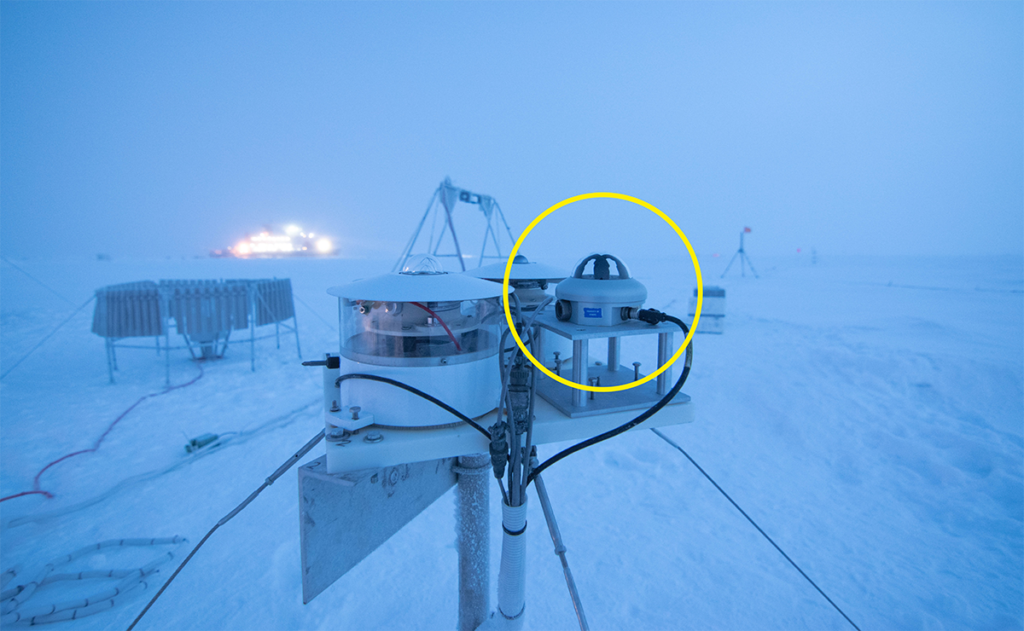Delta-T Devices’s SPN1 Sunshine Pyranometer is amongst instruments being used on a one-year long expedition to the Central Arctic. This major research project, titled MOSAiC (Multidisciplinary drifting Observatory for the Study of Arctic Climate) is closely analysing the Arctic (as the epicenter of global warming) in order to gain fundamental insights about the nature of global climate change.
Over 500 scientists from 20 countries are involved in the expedition, which is focused around a research icebreaker ship operating close to the North Pole for 12 consecutive months. The meteorological and environmental data gathered is expected to provide scientists with critical new information regarding global warming.
The SPN1 Sunshine Pyranometer is being deployed by the expedition team (as part of the U.S. Department of Energy’s Atmospheric Radiation Measurement (ARM) IceRad system) to measure global and diffuse solar radiation alongside sunshine hours. The SPN1 offers an internally heated, compact and highly rugged solar measurement solution. It is ideal for use in extreme environments as it features no moving parts and requires no adjustment during use.
Delta-T Devices Sales Manager David Frew said,
“The SPN1 Pyranometer is being adopted by some of the most prestigious research teams in the world, and we are very proud that our equipment is part of such an important research project as MOSAiC. Delta-T Devices has a particularly strong interest in assisting scientists to investigate climate change and food security issues, so MOSAiC aligns closely to our own concerns and goals. I believe that the SPN1’s inclusion in this expedition reflects the confidence that the global research community has in Delta-T Devices instruments.”

Expedition photo with brightly lit icebreaker ship “Polarstern” in the background. The SPN1 Sunshine Pyranometer is circled in yellow.

